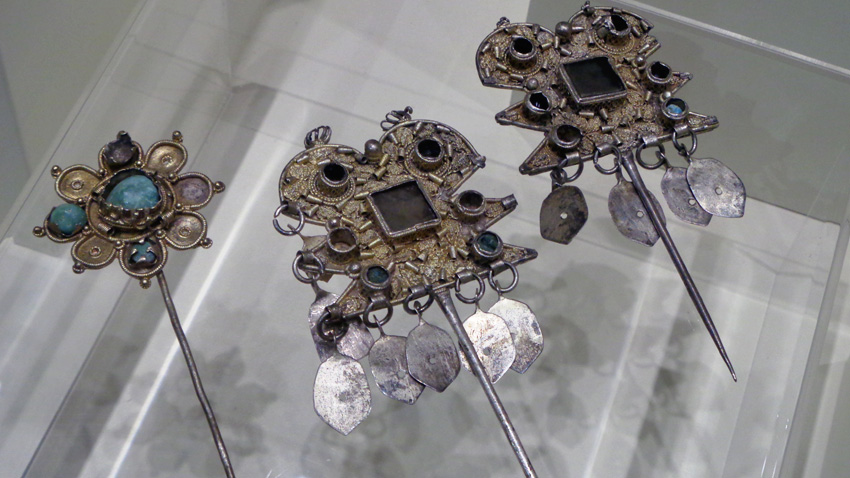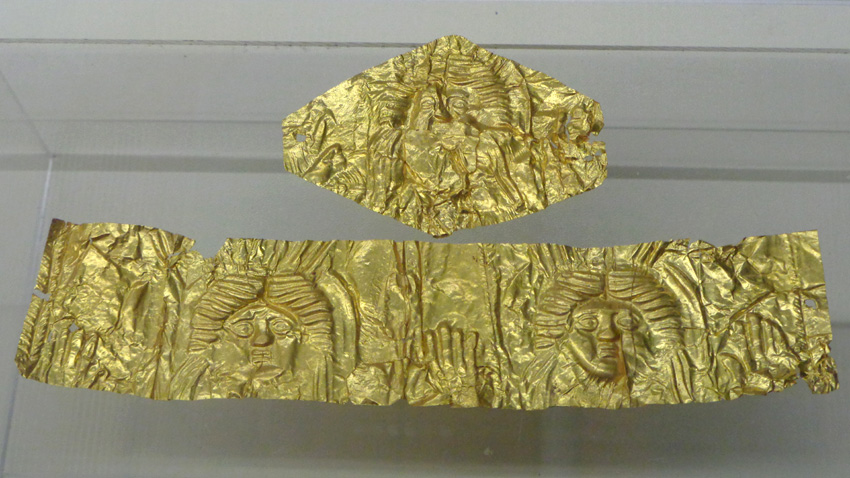 4
4
A magnificent exhibition - “Mirror of time: the beauty of women through the ages”- opened at the Bulgarian Academy of Sciences National Institute of Archaeology with Museum on May 12. The exhibition features artifacts from the Early Iron Age (11th -6th century BC) up to the Late Middle Ages. The exposition is on until 25 September.
“The exposition comprises 170 exhibits: jewellery, cosmetics, items of clothing, frescoes, pictures on pottery and metal utensils,” says Ass. Prof. Dr. Lyudmil Vagalinski, Director of the Bulgarian Academy of Sciences National Institute of Archaeology with Museum. “They are made out of all kinds of material: gold, silver, pottery, glass, bone even cork used for making sandals. The exposition catalogue is a compelling read offering a wealth of information about fashion trends through the ages - all of it science-based research into fashion that is fascinating. We can see what they were in the time of the ancient Thracians and over the centuries to the time of our great-grandmothers -women in Bulgaria during the Middle Ages.”

The idea for this exhibition belongs to experts from the museum. To begin with Lyudmil Vagalinski had doubts whether a sufficient number of exhibits could be got together for the exposition. But the team - almost entirely female, assisted by a young colleague - did a wonderful job. Fifteen museums from the country provided many of the exhibits whereas the Ministry of Culture funded the printing of the exposition catalogue. Dr. Natalia Ivanova is curator of the exhibition:
“What was really important to me was to be able to select a wide array of different objects -the subject of the exhibition allows this. We present jewellery and different costume elements. We have endeavoured to trace the development of fashion trends in clothes and hairstyles over this vast period of time. And I think we have succeeded - visitors will see there are a great many and different items on show.”
The exhibition features beautiful gold and silver jewellery, stones, aromatic oils and cosmetics, mirrors, pieces of ancient fabrics that have survived to our day. Some of the jewellery actually looks absolutely modern. There are even substances used for makeup in the ancient Apollonia on the Black Sea. Incidentally, Thracian women tattooed their bodies; visitors will even be able to see what ancient piercings were like…

“It should be borne in mind that we have more information about wealthy people,” Lyudmil Vagalinski says. “Unfortunately now, as back then, it is rich people that leave information about themselves behind, they have the means to do so. Whether it will be someone else writing about them or them writing about themselves on stone, it makes no matter, it is all a question of money. So the information we have is mostly about them. The only way to find anything out about ordinary people is by taking a look at archaeology.”
English version: Milena Daynova
Photos: Veneta PavlovaArchaeologists have explored a necropolis in the Kavatsi area near Sozopol. The perimeter in which it is located is part of the history of Apollonia Pontica and is dated to the 4th century BC. "This is a site with interesting burials in which a nuance..
On November 10, 1989, at a plenum of the Central Committee of the Bulgarian Communist Party, Todor Zhivkov was removed from the position of General Secretary - the highest position in the party and the state. What happened at the..
Archaeologists have discovered a very rare and valuable glass bottle in a 2nd-century tomb in the southern necropolis of the Roman colony Deultum near the village of Debelt (Southeastern Bulgaria). What makes it unique is that it depicts the myth of..
On November 30, the Bulgarian Orthodox Church honors the memory of St. Apostle Andrew . In Bulgaria the saint is known as Saint Andrey and the folk..

+359 2 9336 661
